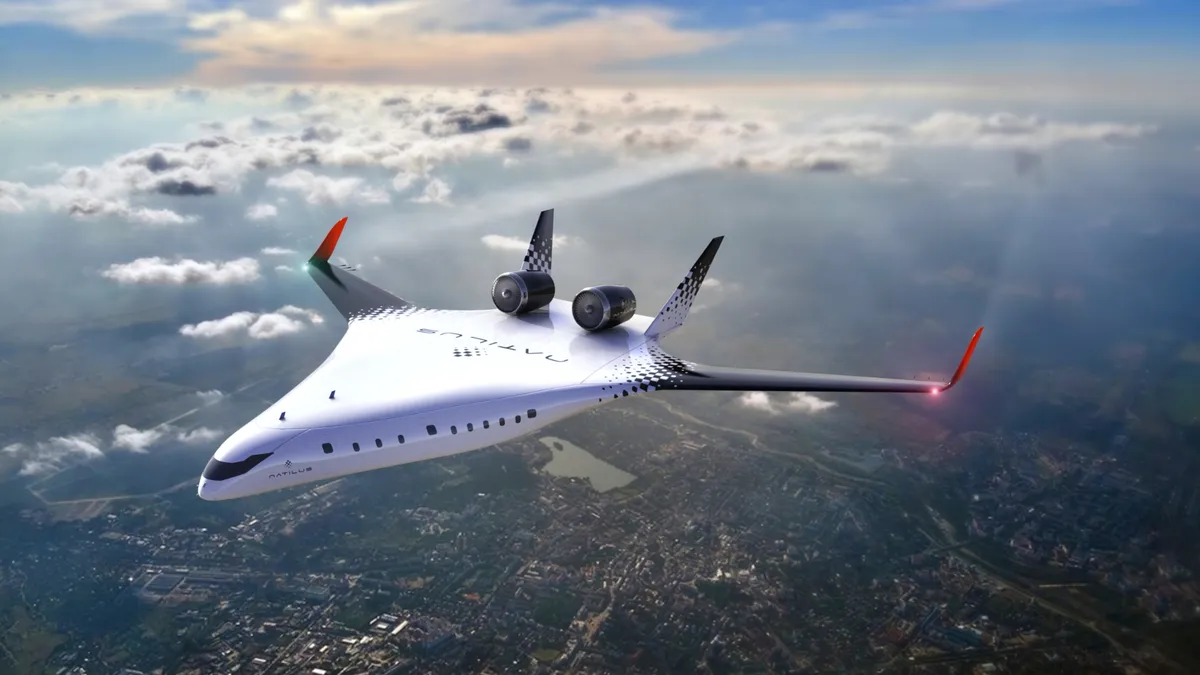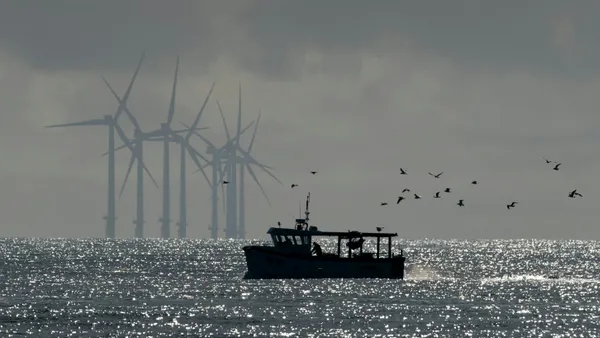Dive Brief:
- Aerospace company Natilus announced plans Wednesday to create a commercial aircraft that will emit 50% less emissions and consume 30% less fuel compared to competing airliners.
- The San Diego, California-based startup’s co-founder and CEO Aleksey Matyushev told ESG Dive the “Horizon” aircraft will rely on a blended wing body model, which allows for smaller engines and “greater aerodynamic efficiency” that ultimately lead to decreased emissions and fuel usage.
- The Horizon plane will be able to transport up to 200 passengers and is advertising two flight routes: from Los Angeles-to-Boston or New York-to-London, per launch materials seen by ESG Dive.
Dive Insight:
The aerospace innovation company said it would be the first to use a blended wing body design for commercial aviation. The Horizon model would compete in a market against popular models such as the Boeing 737 Max and Airbus A320 — both of which use a traditional tube and wing design.
Matyushev, who spearheaded the development of the aircraft, told ESG Dive that Horizon’s design — which has no clear division between the plane’s main body and wings — will derive 50% of its lift from its fuselage and the other 50% from the wing. A traditional tube and wing airplane, in comparison, generates 90% of its lift from the wing and only 10% from its tube, or body, per the CEO.
“[Horizon’s] smaller wing and more efficient fuselage help create a more aerodynamic design with less drag, which means that the aircraft requires less fuel and leads to less carbon emissions compared to today’s aircraft,” Matyushev said in an email Tuesday.
The CEO and co-founder — who brings nearly two decades of experience in the aviation and aerospace sector to the table — said Horizon’s projected weight will also be lower compared to traditional tube and wing models, which allows it to use smaller and more efficient engines.
Matyushev said Horizon is expected to hit the market in the early 2030s, and the launch is “timed to meet the deadlines for carriers to make purchasing decisions on their next fleets to meet 2050 net-zero goals.”
Matyushev said the new aircraft is designed to be fully compatible with both standard Jet A fuel, or kerosene-type aviation fuel, and sustainable aviation fuel. This dual compatibility will allow the aircraft to use more SAF as the aviation industry continues to scale production. Major airlines have previously raised concerns about the challenge of growing the SAF market at a pace that allows the fuel to be available at a necessary price and scale needed to drive emissions reductions across the sector.
“At present, there isn’t enough annual production of SAF to fuel the world’s airlines for even one week,” Delta Air Lines wrote in its annual ESG report this year. “Achieving the exponential increase in production required will be dependent on the combined efforts of airlines, fuel producers, federal and state governments and others.”










